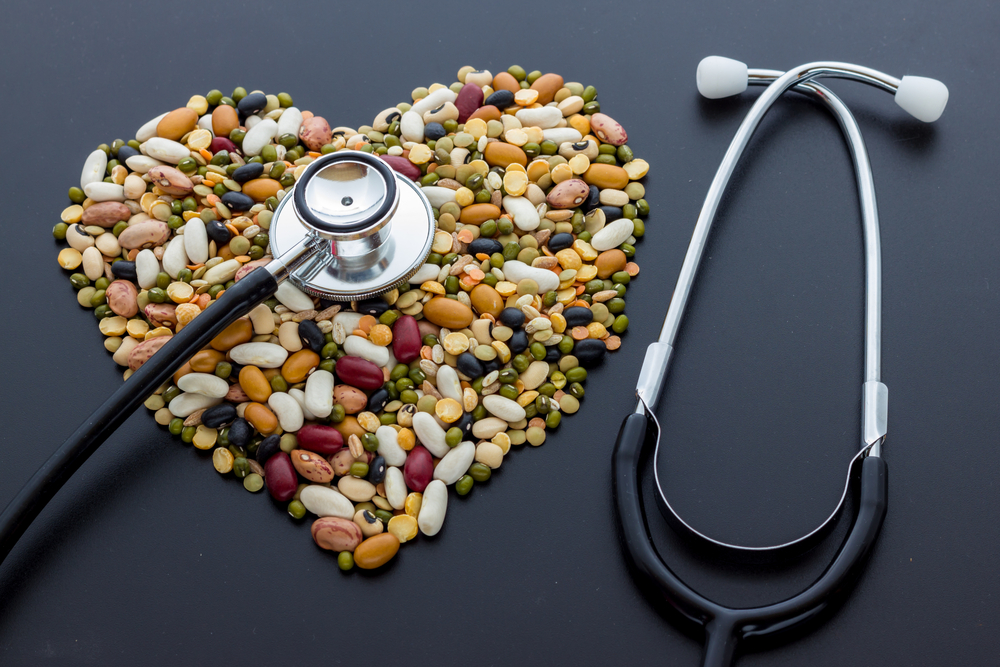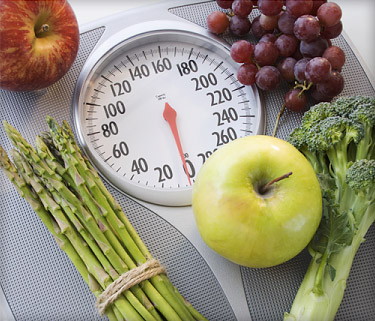Beans are a type of legume that are widely consumed around the world for their nutritional value and versatility in cooking.
Here are some key points about beans:
- Variety: Beans come in many different varieties, including black beans, kidney beans, pinto beans, navy beans, chickpeas (garbanzo beans), lentils, and soybeans, among others. Each variety has unique characteristics in terms of flavor, texture, and culinary uses.
- Nutritional Value: Beans are highly nutritious. They are a rich source of protein, making them an excellent alternative to meat for vegetarians and vegans. They are also high in fiber, which aids digestion and helps maintain bowel health. Beans provide essential vitamins and minerals such as iron, magnesium, potassium, and folate.
- Health Benefits: Regular consumption of beans offers numerous health benefits. They can help lower cholesterol levels, regulate blood sugar levels, and reduce the risk of chronic diseases such as heart disease and diabetes. The high fiber content in beans also promotes a feeling of fullness, which can aid in weight management.
- Culinary Uses: Beans are incredibly versatile in the kitchen. They can be used in soups, stews, salads, dips, and spreads. They are a staple ingredient in many traditional dishes from various cultures, such as chili, hummus, falafel, and bean salads.
- Preparation: Dried beans require soaking before cooking to reduce cooking time and improve digestibility. Canned beans are a convenient alternative, as they are pre-cooked and ready to use, but it is advisable to rinse them to remove excess sodium.
- Environmental Impact: Beans are considered environmentally friendly compared to animal protein sources. They require fewer resources (like water and land) to produce and contribute to soil health through nitrogen fixation, which reduces the need for synthetic fertilizers.
- Storage: Dried beans have a long shelf life when stored in a cool, dry place. Cooked beans can be stored in the refrigerator for several days or frozen for longer-term storage.
In summary, beans are a nutritious, versatile, and environmentally friendly food that can be incorporated into a wide variety of dishes, offering numerous health benefits.
Type Of Beans and Their Health Benefits:
- Black Beans
Description: Black beans, also known as turtle beans, are small, shiny beans with a dense, meaty texture.
- Rich in Antioxidants: High levels of anthocyanins help fight free radicals and reduce inflammation.
- Protein and Fiber: Promote satiety, aid digestion, and help regulate blood sugar levels.
- Heart Health: Contain magnesium and potassium, which help lower blood pressure.
- Kidney Beans
Description: Kidney beans are large, kidney-shaped beans that come in red and white varieties.
- High in Fiber: Helps lower cholesterol and improve digestive health.
- Iron-Rich: Important for red blood cell production and energy levels.
- Antioxidants: Contains flavonoids and phenolic compounds that have anti-inflammatory properties.
- Pinto Beans
Description: Pinto beans are beige with reddish-brown specks that disappear when cooked.
- Good Source of Folate: Essential for DNA synthesis and repair, especially important during pregnancy.
- Blood Sugar Regulation: Fiber content helps stabilize blood sugar levels.
- Cholesterol-Lowering: Soluble fiber helps reduce LDL cholesterol.
- Navy Beans
Description: Small, white beans that are often used in baked beans and soups.
- Heart Health: High in potassium, which helps control blood pressure.
- Bone Health: Rich in magnesium and calcium.
- Digestive Health: High fiber content promotes regular bowel movements.
- Chickpeas (Garbanzo Beans)
Description: Round, beige beans that are a staple in Middle Eastern cuisine.
- Protein-Packed: Great for vegetarians and vegans as a meat alternative.
- Blood Sugar Control: Low glycemic index helps regulate blood sugar levels.
- Weight Management: High in fiber and protein, which promote satiety.
- Lentils
Description: Small, lens-shaped beans that come in various colors including green, brown, red, and black.
- Quick Cooking: Do not require soaking and cook quickly.
- Rich in Folate and Iron: Essential for red blood cell formation and preventing anemia.
- Heart Health: High in soluble fiber, which helps reduce cholesterol.
Description: Green, yellow, or black beans that are used to make tofu, tempeh, and edamame.
- Complete Protein: Contains all essential amino acids.
- Bone Health: Rich in calcium and magnesium.
- Cancer Prevention: Contains phytoestrogens which may reduce the risk of certain cancers.
- Red Beans (Adzuki Beans)
Description: Small, red beans commonly used in Asian cuisine.
- Rich in Antioxidants: High levels of anthocyanins and other antioxidants.
- Digestive Health: High fiber content helps promote regularity.
- Energy Production: Rich in manganese, which is important for energy metabolism.
- Black-Eyed Peas
Description: Small, creamy white beans with a black spot, commonly used in Southern U.S. cuisine.
- Good Source of Folate: Important for DNA synthesis and repair.
- Digestive Health: High fiber content promotes regular bowel movements.
- Heart Health: Contains potassium and magnesium, which help lower blood pressure.
- Fava Beans (Broad Beans)
Description: Large, flat beans that are green when fresh and brown when dried.
- Rich in Protein and Fiber: Helps maintain muscle mass and digestive health.
- High in Folate: Important for pregnant women and in the prevention of birth defects.
- Parkinson’s Disease: Contains L-dopa, a compound that the body converts into dopamine, which may benefit those with Parkinson’s.
Incorporating a variety of beans into your diet can provide a wide range of health benefits, contributing to overall well-being and the prevention of many chronic diseases.
Increasing bean consumption in your diet can be easy and delicious with a few simple strategies.
Here are some easy ways to incorporate more beans into your meals:
- Add to Salads
- Chickpeas: Toss canned or cooked chickpeas into your salads for added protein and texture.
- Black Beans: Add black beans to a corn and avocado salad for a Southwestern twist.
- Lentils: Use cooked lentils as a base for a hearty salad with vegetables and a light vinaigrette.
- Include in Soups and Stews
- White Beans: Add cannellini or navy beans to vegetable soups for extra protein and fiber.
- Pinto Beans: Incorporate pinto beans into chili or a bean and sausage stew.
- Lentils: Make a lentil soup with carrots, celery, and spices for a nutritious meal.
- Blend into Dips and Spreads
- Hummus: Make homemade hummus using chickpeas, tahini, lemon juice, and garlic.
- Black Bean Dip: Blend black beans with spices, lime juice, and garlic for a tasty dip.
- White Bean Spread: Puree white beans with olive oil, garlic, and herbs for a creamy spread.
- Incorporate into Main Dishes
- Bean Burgers: Make veggie burgers using mashed black beans or chickpeas mixed with vegetables and spices.
- Tacos and Burritos: Use black beans, pinto beans, or refried beans as a filling for tacos and burritos.
- Casseroles: Add beans to casseroles, such as a Mexican bean and rice bake or a shepherd’s pie with lentils.
- Substitute Beans for Meat
- Chili: Make a vegetarian chili using a mix of kidney beans, black beans, and pinto beans.
- Bean Stews: Create hearty bean stews with a variety of beans, vegetables, and spices.
- Bean-Based Pasta: Use bean-based pasta (like chickpea or lentil pasta) as a higher-protein alternative to traditional pasta.
- Sneak into Smoothies and Baked Goods
- Smoothies: Add a handful of cooked white beans or chickpeas to your smoothie for added protein and creaminess without altering the taste.
- Baked Goods: Use pureed black beans in brownies or chickpeas in cookie dough for healthier baked treats.
- Make Bean Salads
- Three-Bean Salad: Combine kidney beans, chickpeas, and green beans with a tangy vinaigrette.
- Mediterranean Bean Salad: Mix cannellini beans with tomatoes, cucumbers, olives, and feta cheese.
- Use as a Side Dish
- Baked Beans: Serve baked beans as a side dish with grilled meats or vegetables.
- Seasoned Beans: Cook beans with garlic, onions, and spices for a simple and tasty side dish.
- Incorporate into Breakfast
- Breakfast Burritos: Add black beans or refried beans to breakfast burritos with eggs, cheese, and vegetables.
- Bean Toast: Spread mashed white beans on whole-grain toast and top with avocado or tomatoes.
- Try Different Bean Varieties
- Experiment with different types of beans like adzuki beans, mung beans, or fava beans in your recipes to keep your meals interesting and diverse.
By incorporating these simple strategies, you can easily increase your bean consumption and enjoy the numerous health benefits that beans offer.
Beans are a versatile and nutritious addition to any diet, offering an array of health benefits that support overall well-being. Rich in protein, fiber, vitamins, and minerals, they contribute to heart health, aid in digestion, help regulate blood sugar levels, and promote weight management. With their ability to fit seamlessly into a variety of dishes—from salads and soups to main courses and snacks—beans are an accessible and delicious way to enhance your meals. Whether you’re looking to adopt a more plant-based diet, boost your nutrient intake, or simply enjoy diverse and flavorful foods, incorporating beans into your daily routine is a simple and effective strategy for achieving a healthier lifestyle.
READ MORE: Beans – A Quick And Easy Way To Add Protein
Sources:
https://www.ndsu.edu/agriculture/extension/publications/all-about-beans-nutrition-health-benefits-preparation-and-use-menus
https://www.ncbi.nlm.nih.gov/pmc/articles/PMC7915747/
https://www.webmd.com/diet/health-benefits-kidney-beans









